

September 5 – 11: “What is the best point of view for a thriller?”
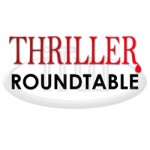 What is the best point of view for a thriller? This week we’re joined by ITW Members Paul McGoran, Judy Penz Sheluk, Sheila Lowe, Ron Parham, Wendy Walker and David McCaleb as they discuss the best point of view for a thriller.
What is the best point of view for a thriller? This week we’re joined by ITW Members Paul McGoran, Judy Penz Sheluk, Sheila Lowe, Ron Parham, Wendy Walker and David McCaleb as they discuss the best point of view for a thriller.
~~~~~
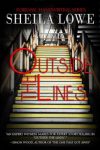 The mother of a tattoo artist and a rock star, Sheila Lowe lives in Southern California with Lexie the Very Bad (sometimes Evil) Cat, where she writes the award-winning Forensic Handwriting series. Like her fictional character Claudia Rose, she’s a real-life forensic handwriting expert who testifies in court cases. Sheila writes “medium boiled,” books (definitely not cozies) that she think of as psychological suspense. In other words, she puts ordinary people into extraordinary circumstances and makes them squirm. She also writes non-fiction books about handwriting: The Complete Idiot’s Guide to Handwriting Analysis, Handwriting of the Famous & Infamous, and Handwriting Analyzer software.
The mother of a tattoo artist and a rock star, Sheila Lowe lives in Southern California with Lexie the Very Bad (sometimes Evil) Cat, where she writes the award-winning Forensic Handwriting series. Like her fictional character Claudia Rose, she’s a real-life forensic handwriting expert who testifies in court cases. Sheila writes “medium boiled,” books (definitely not cozies) that she think of as psychological suspense. In other words, she puts ordinary people into extraordinary circumstances and makes them squirm. She also writes non-fiction books about handwriting: The Complete Idiot’s Guide to Handwriting Analysis, Handwriting of the Famous & Infamous, and Handwriting Analyzer software.
 Wendy Walker is a family law attorney in Connecticut. Prior to her legal career, she worked as a financial analyst at Goldman, Sachs. All Is Not Forgotten is her first psychological thriller. Wendy is currently writing her second thriller and managing a busy household of teenage boys.
Wendy Walker is a family law attorney in Connecticut. Prior to her legal career, she worked as a financial analyst at Goldman, Sachs. All Is Not Forgotten is her first psychological thriller. Wendy is currently writing her second thriller and managing a busy household of teenage boys.
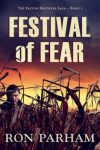 Ron Parham is an accomplished and award-winning author of thrillers Molly’s Moon and Copperhead Cove, and the upcoming Festival of Fear, due out in the summer of 2016. His novels are about ordinary people caught up in extraordinary circumstances. Festival of Fear takes place in southwest Iowa, where he grew up and spent his childhood. All three novels are part of the Paxton Brothers Saga. He now lives and writes in the Temecula Valley, a world-famous wine-growing region just east of Los Angeles and north of San Diego. He is currently working on his first novel of the Gas Lamp Saga, starring Jake Delgado, the private investigator from his first two novels.
Ron Parham is an accomplished and award-winning author of thrillers Molly’s Moon and Copperhead Cove, and the upcoming Festival of Fear, due out in the summer of 2016. His novels are about ordinary people caught up in extraordinary circumstances. Festival of Fear takes place in southwest Iowa, where he grew up and spent his childhood. All three novels are part of the Paxton Brothers Saga. He now lives and writes in the Temecula Valley, a world-famous wine-growing region just east of Los Angeles and north of San Diego. He is currently working on his first novel of the Gas Lamp Saga, starring Jake Delgado, the private investigator from his first two novels.
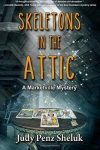 Judy Penz Sheluk’s debut mystery novel, The Hanged Man’s Noose, the first in the Glass Dolphin Mystery series, was published in July 2015 by Barking Rain Press. Skeletons in the Attic, Judy’s second novel, and the first in her Marketville Mystery series, will be published in August 2016 by Imajin Books. Judy’s short crime fiction appears in World Enough and Crime (Carrick Publishing), The Whole She-Bang 2 (Toronto Sisters in Crime), Flash and Bang (Untreed Reads) and Live Free or Tri: a collection of three short mystery stories. She is also the author of Unhappy Endings: a collection of three flash fiction stories. In her less mysterious pursuits, Judy works as a freelance writer; her articles have appeared regularly in dozens of U.S. and Canadian consumer and trade publications. In addition to ITW, Judy is also a member of Sisters in Crime International, Sisters in Crime – Guppies, Sisters in Crime – Toronto, Crime Writers of Canada, and the Short Mystery Fiction Society. She lives in Alliston, Ontario, Canada, with her husband, Mike, and their golden retriever, Leroy Jethro “Gibbs”.
Judy Penz Sheluk’s debut mystery novel, The Hanged Man’s Noose, the first in the Glass Dolphin Mystery series, was published in July 2015 by Barking Rain Press. Skeletons in the Attic, Judy’s second novel, and the first in her Marketville Mystery series, will be published in August 2016 by Imajin Books. Judy’s short crime fiction appears in World Enough and Crime (Carrick Publishing), The Whole She-Bang 2 (Toronto Sisters in Crime), Flash and Bang (Untreed Reads) and Live Free or Tri: a collection of three short mystery stories. She is also the author of Unhappy Endings: a collection of three flash fiction stories. In her less mysterious pursuits, Judy works as a freelance writer; her articles have appeared regularly in dozens of U.S. and Canadian consumer and trade publications. In addition to ITW, Judy is also a member of Sisters in Crime International, Sisters in Crime – Guppies, Sisters in Crime – Toronto, Crime Writers of Canada, and the Short Mystery Fiction Society. She lives in Alliston, Ontario, Canada, with her husband, Mike, and their golden retriever, Leroy Jethro “Gibbs”.
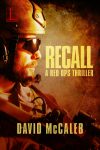 David McCaleb was born on the Eastern Shore of Virginia. Growing up on a farm, he studied the teachings of nature, enjoying hunting and fishing, intermingled with hard labor. One of the last green belts on the east coast, the Eastern Shore is steeped in creative culture, with which he credits much of his inspiration. He graduated from St. Andrews School in Middletown, Delaware, attended Valley Forge Military College, and then was accepted into the United States Air Force Academy, graduating in 1995. He served in the Air Force as a finance officer, managing base and command-level finance operations, as well as weapons system procurement in support of Cheyenne Mountain. In 2000, he worked as a corporate financial analyst for a publicly traded software development company. He started an internet retail business in 2003, selling custom-made window coverings. After almost starving the first year, the business grew into a successful enterprise. Selling that venture in 2007, he joined his father in the family insurance agency, McCaleb-Metzler. Today, David works as a commercial insurance agent, serving as president of the business. In order to counteract the rigidity of having to make a living, David writes. A lot. He started in 2009 and intensely studies his craft. RECALL, the first novel in the RED OPS series, is available August 2016. RELOAD hits shelves August 2017. The third book in the series is currently in production.
David McCaleb was born on the Eastern Shore of Virginia. Growing up on a farm, he studied the teachings of nature, enjoying hunting and fishing, intermingled with hard labor. One of the last green belts on the east coast, the Eastern Shore is steeped in creative culture, with which he credits much of his inspiration. He graduated from St. Andrews School in Middletown, Delaware, attended Valley Forge Military College, and then was accepted into the United States Air Force Academy, graduating in 1995. He served in the Air Force as a finance officer, managing base and command-level finance operations, as well as weapons system procurement in support of Cheyenne Mountain. In 2000, he worked as a corporate financial analyst for a publicly traded software development company. He started an internet retail business in 2003, selling custom-made window coverings. After almost starving the first year, the business grew into a successful enterprise. Selling that venture in 2007, he joined his father in the family insurance agency, McCaleb-Metzler. Today, David works as a commercial insurance agent, serving as president of the business. In order to counteract the rigidity of having to make a living, David writes. A lot. He started in 2009 and intensely studies his craft. RECALL, the first novel in the RED OPS series, is available August 2016. RELOAD hits shelves August 2017. The third book in the series is currently in production.
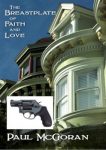 Before turning to crime fiction, Paul McGoran had a varied career as Navy linguist, marketing executive, management consultant and day trader. His first published novel was the pulp thriller, Made for Murder (New Pulp Press, 2015). He is also the author of a collection of short noir fiction, Paying for Pain. Paul writes fiction because it is most immersive activity he has ever known. His next novel will bring his P.I. protagonist back to his old hometown to solve the revenge murder of the bully who terrorized his childhood.
Before turning to crime fiction, Paul McGoran had a varied career as Navy linguist, marketing executive, management consultant and day trader. His first published novel was the pulp thriller, Made for Murder (New Pulp Press, 2015). He is also the author of a collection of short noir fiction, Paying for Pain. Paul writes fiction because it is most immersive activity he has ever known. His next novel will bring his P.I. protagonist back to his old hometown to solve the revenge murder of the bully who terrorized his childhood.
- LAST GIRL MISSING with K.L. Murphy - July 25, 2024
- CHILD OF DUST with Yigal Zur - July 25, 2024
- THE RAVENWOOD CONSPIRACY with Michael Siverling - July 19, 2024
